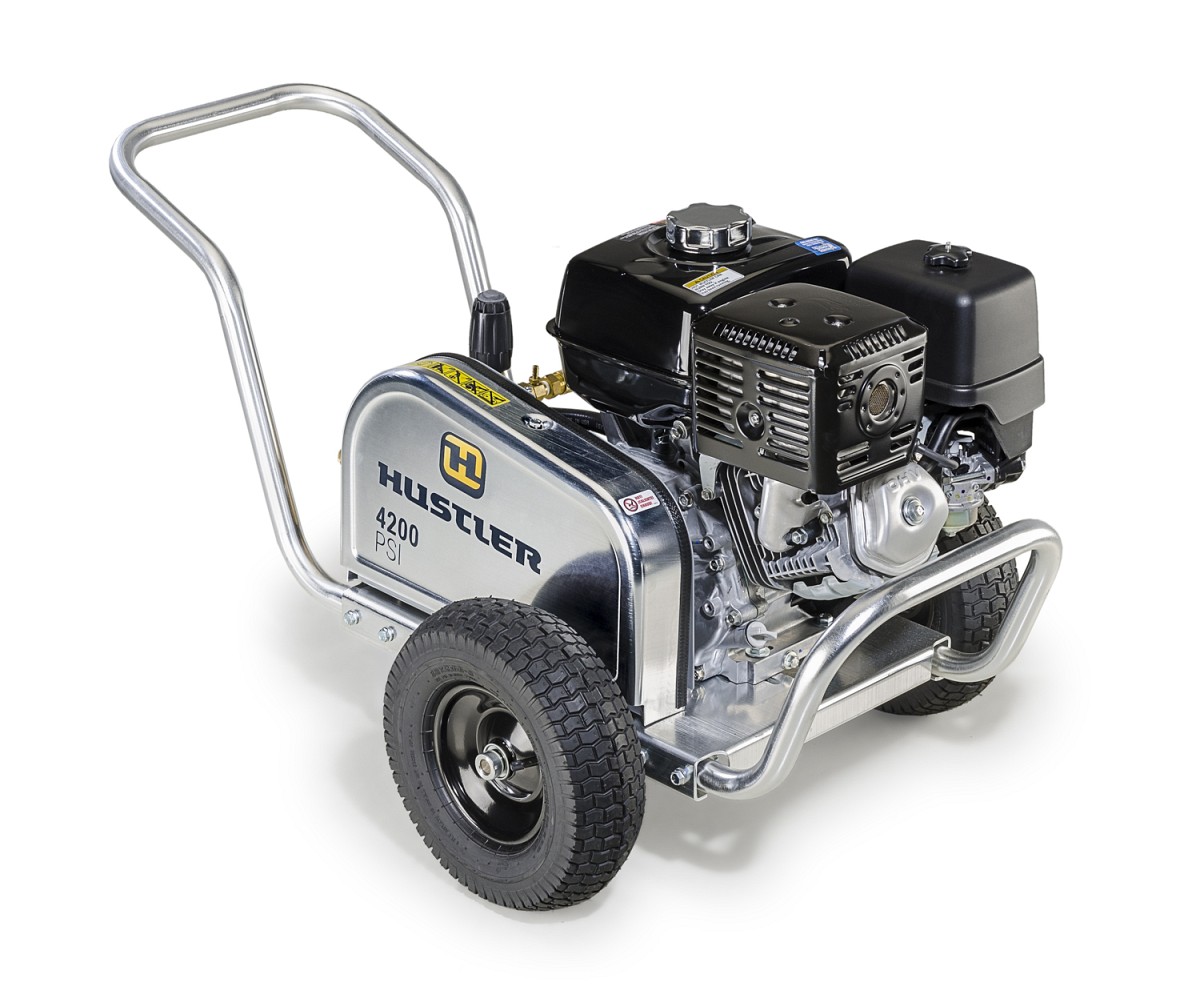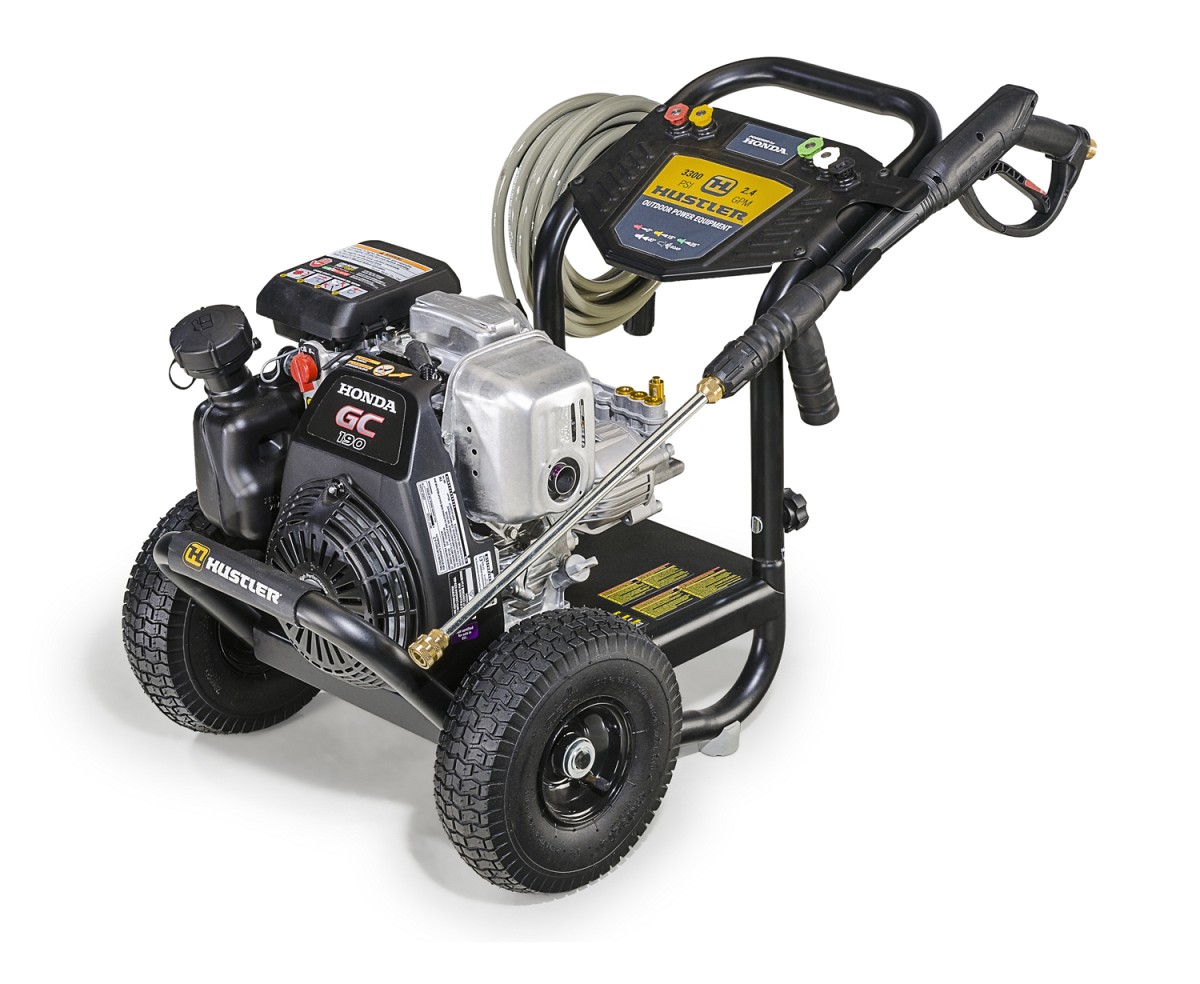Pressure Washing: What You Need to Know
 Save time, save water, and get your home and hardscape sparkling clean! Yes, pressure washing does all of the above. Here’s what you need to know to successfully use a pressure washer.
Save time, save water, and get your home and hardscape sparkling clean! Yes, pressure washing does all of the above. Here’s what you need to know to successfully use a pressure washer.
Pressure washing prep
- Choose proper clothing and safety gear. Always wear safety glasses and non-slip shoes. Pressure washing is a dirty job – dress in clothes that will protect your body from debris and water spray.
- Fill your pressure washer with gas and check that you have enough engine oil.
- Avoid pump damage. After connecting your water source to the pressure washer, turn the water on first. Then start the machine.
- Test the pressure washer by pulling the trigger. However, be sure it’s pointed up in the air and not at an object.
Pressure washing technique
- Select the proper spray nozzle. Many pressure washers come with easily changeable nozzles, ranging from 0 degrees (a straight shot), up to 40-45 degrees to fan the spray out. If you’re cleaning graffiti, say, use a 0-degree, which will shoot a hard stream of water at your concrete. But for washing a vehicle, you want the nozzle that fans out the most, so you don’t strip the paint.
- Hold your spray gun at least 36” inches from the object you wish to clean. Move closer as needed but be careful, as higher-pressure units can cause damage at too close a range.
- Clean using a side-to-side or “wave” motion. This will be best to help remove dirt/debris without harming your surface.
- Use a soap nozzle and soap as needed. Put the pressure washer tube into a soap container and the nozzle will spray an even layer on your car or whatever you’re cleaning.
- Be cautious. Overly strong pressure washing can chew right into wood. Do not power wash delicate items like lawn mower bearings or garden plants. Never aim the appliance at people. It is not a water gun!
Maintenance
- Keep your hand on the trigger when you shut the pressure washer off. This will release the water, so you don’t have excessive pressure on the pump.
- Drain water out of the hose as much as possible after use. Then roll the hose back up and keep it in a rolled position.
- Store the pressure washer out of the elements. Nothing is worse on equipment than storing it outside or in a non-insulated garage or shed, where it may freeze. Even in warm weather, sun deteriorates plastic parts, while rain causes rust.

Advantages of owning a pressure washer
As average homeowners, you probably could get by with renting a pressure washer, but if you own one, you won’t have to worry about heading out to the home center every weekend or so. Just pull it out of the garage and – boom! – get the job done.
And if you have the machine right there, you’ll end up using it to simplify many tasks on your honey-do list, such as washing dust off your siding or removing a wasp nest from your gutter.
It’s also handy for removing oil stains from your driveway, cleaning brick pavers, or getting rid of moss and algae.
DIY or hire a pro?
Even if you are the proud owner of a pressure washer, you may prefer to hire a contractor for certain tasks. Consider these factors:
- Time. How much disposable time do you have for a lengthy process like cleaning your house exterior? An all-day job is something you might want to hire out.
- Access. DIY pressure washing a 2- or 3-story house from atop a ladder is not a good idea. The pros know how to deal with it safely.
- Equipment. The pump of a homeowner pressure washer is designed for 1-2 hours of use at a time. By contrast, your contractor’s pricey heavy-duty industrial model can run efficiently all day.
Tips provided by Brad Unruh, director of new product development for Hustler Turf Equipment.
Laura Firszt writes for networx.com.
Looking for a Pro? Call us (866) 441-6648

Handyman Average Costs
Handyman Services Experiences

Grout Replacement Made My Shower Look Brand New

Emergency Roof Repair To Replace Broken Shingles



